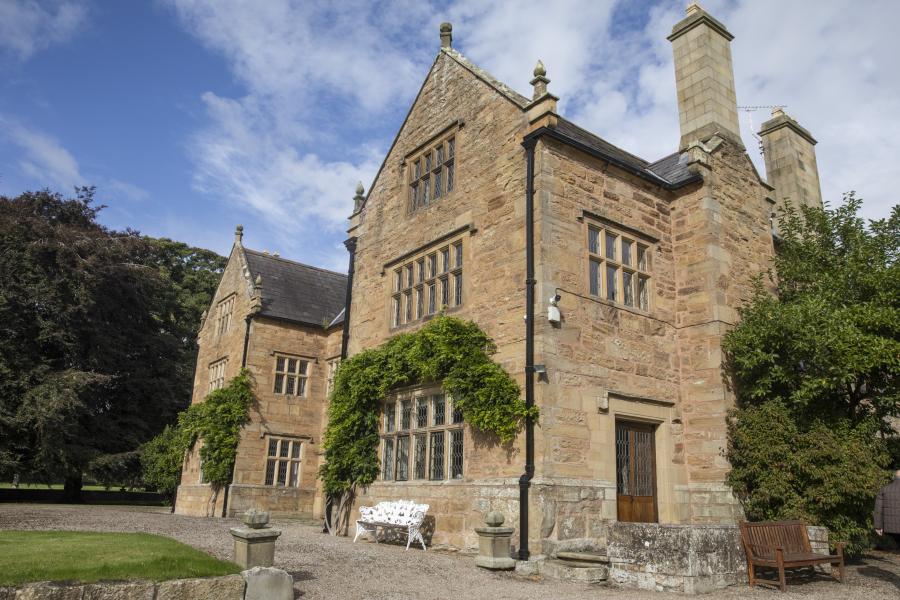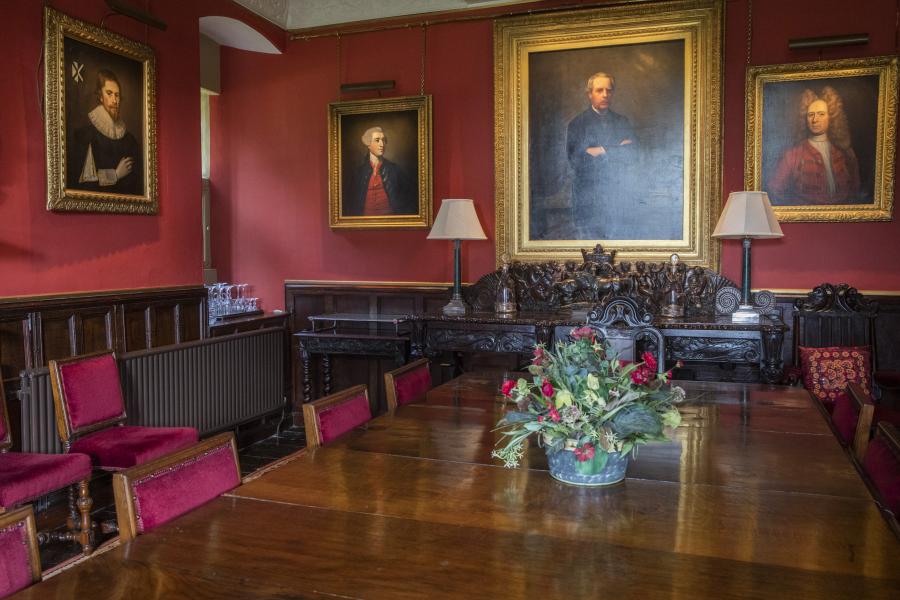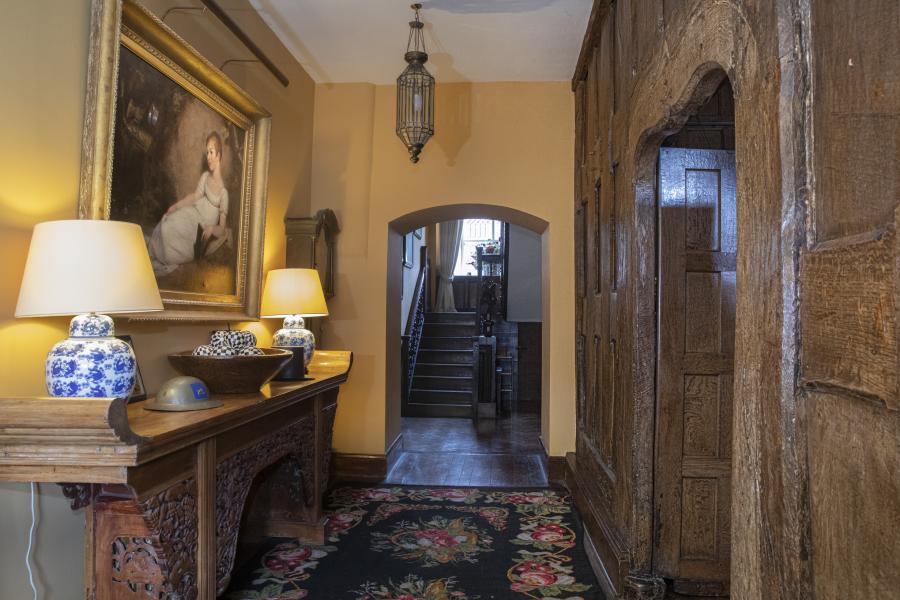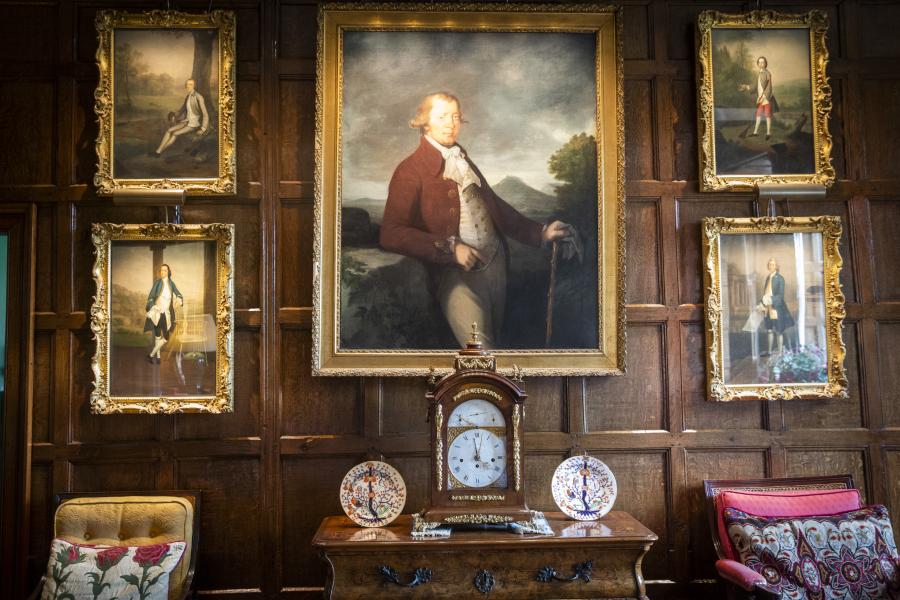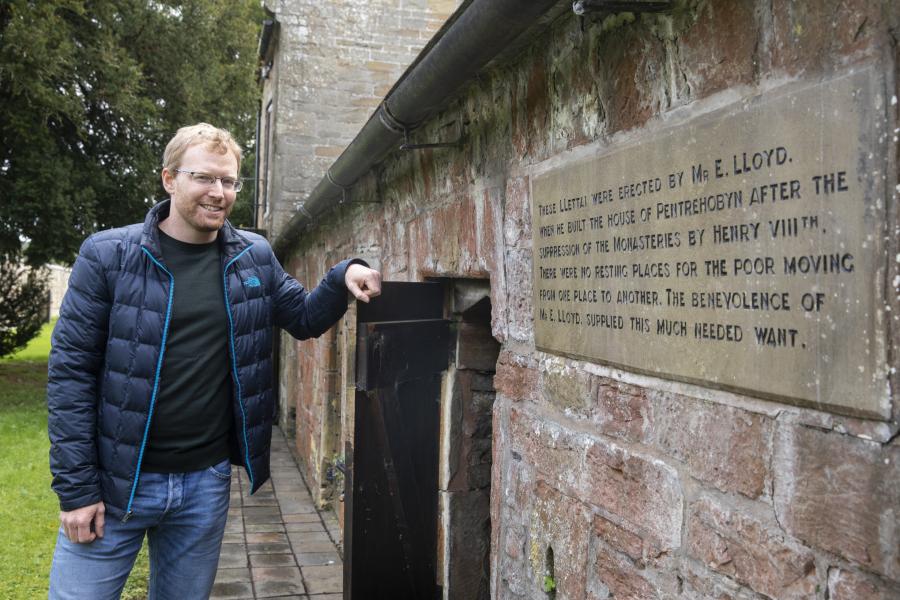Royalty, pilgrims and slavery – mapping the stately homes of North East Wales
A 16th century Flintshire mansion owned by a descendant of Welsh royalty and once a budget hotel for medieval pilgrims is now part of a ground-breaking £250,000 project to trace over 400 years of the history of North East Wales.
A team led by experts from Bangor University is to chart the development of four parishes on the borders of Flintshire, Wrexham and Denbighshire through the historic homes and estates of its landed gentry.
It will be the first time any area of the UK has been examined in such detail with the aim to produce a special online deep map with layers of historic information to show not just the stories of the people but also of the landscape from 1500 to 1930 as the homes they lived in and the way they farmed and worked the land changed.
Pentrehobyn Hall, on the outskirts of Mold, built in 1550 by the Lloyd family, is one of several of the area’s country mansions with histories going back centuries, built from the proceeds of coal and lead mining, slavery, the cloth and leather trade and from farming.
The project is being led by Dr Shaun Evans, of the Institute for the Study of Welsh Estates (ISWE), based at Bangor University, with Dr Julie Mathias from Aberystwyth University and Scott Lloyd and Jon Dollery from the Royal Commission on the Ancient and Historical Monuments of Wales.
It will concentrate on four ancient parishes where the counties of Flintshire, Wrexham and Denbighshire meet, Mold, Llanferres, Llandegla and Llanarmon yn Ial, and which contain a unique concentration of fine country homes.
Dr Evans, Director of ISWE, said: “This area has an amazing number of these rather fine, relatively small yet longstanding landed estates, the likes of Bodidris, Colomendy, Gelligynan, Gwysaney, Hartsheath, Leeswood, Nercwys, Rhual, Pentrehobyn, Plas Onn, Plas Teg and Tower.
“There is an immense amount of archive material from these estates, much of it housed in the North East Wales Archives in Hawarden and Ruthin and in the National Library of Wales in Aberystwyth.
“There is an assumption that these small estates were limited in their importance - that they were relatively small houses with a bit of parkland and gardens, but they had huge influence on the wider world where ordinary people lived and worked.
“We’re really interested in how these places influenced the built environment and the landscape through the types of farming and industry that took place.
“The Grosvenor family who became the Dukes of Westminster made much of their early wealth through lead mining in Flintshire while others earned their fortunes elsewhere and brought back influences.
“The important points we’re trying to show and convey in the form of a map which traces the development of landscapes and buildings across the 430 years from the late medieval period to the beginning of the modern age in the early 20th century.”
At Pentrehobyn Teddy Clarke can trace his ancestry back to the Lloyd family who built the fine sandstone house in 1550 and who claimed descent from the legendary Edwin ap Gronwy, Lord or King of Tegeingl, which includes much of modern day Flintshire, in the 11th century.
The house still has its original great hall with original oak screen partition with the marks of the carpenters’ tools still clear on the wood though extensions and upper storeys were added later.
He said: “The family probably made their money through lead mining in this area but the main income now is through letting the land and cottages and as a wedding venue.
“One of the early owners of the house built a long range of llettau, little rooms where pilgrims on the way to St Winefride’s Well in Holywell could stay the night.
“The main road from Wrexham to Mold, which was a pilgrim route, ran right past the front door then.
“There is also a legend about the house that a monk fell asleep here beside the driveway and woke up 100 years later, a sort of Welsh Rip Van Winkle.”
Family portraits line the walls and among them is one of Trevor Lloyd, who is famous for re-erecting the Pillar of Eliseg near Llangollen, while a later owner of the house, Pennant Lloyd, was the agent for the giant Penrhyn estate at Bangor and Bethesda, owners of the slate quarries there and made their first fortune from slave-run sugar estates on Jamaica.
Lloyd had to negotiate on their behalf with striking slate workers in the late 19th century but when he retired to Pentrehobyn he promptly switched from toeing the Pennant family Tory line to being an ardent supporter of their arch political rivals, the Liberals.
The aim of the project’s research is to create an online Geographical Information System (GIS) on which historic records can be digitised and mapped directly onto the location to which they relate.
The final product will be a ‘deep map’ incorporating all of these records and enabling information from different archives to be viewed instantly and in combination.
Scott Lloyd, of the Royal Commission on the Ancient and Historical Monuments of Wales, said: “We will go back through the Ordnance Survey maps to the Tithe maps and Enclosure Maps back to 1800 and before that to individual estate maps to about 1600.
“We will digitise them and geo-reference them and we can also attach documents to them so you can click on a house on the map and see information about it or even an individual field and see a record of the land use.”
Dr Evans added: “At the click of the button it will be possible to view and move through a full recorded history of the landscape and its individual features, as built up through a layering of records from across the post-medieval period.
“That’s why we chose this area, because it has lots of these estates with lots of information about them, some of it going back to the 14th century, and to do this with this level of detail is new and will be a template for similar exercises in Wales and further afield.
“It’s really interesting because it has a mix of houses, agriculture, industry, woodland and upland areas and the map will show the changes in society over this period of time through the experience of its people.”
For more on Bangor University go to https://www.bangor.ac.uk/
Neuadd Pentrehobyn Hall
